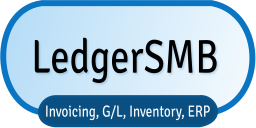Upgrade to LedgerSMB 1.13 (from 1.12 through 1.4)
Upgrading tarball installations
There are two steps to upgrading a LedgerSMB 1.4.x - 1.11.x to 1.13:
- Upgrade the software
- Upgrade the company database
The last step must be executed for each company database that's set up.
- Read more about Upgrade to LedgerSMB 1.13 (from 1.12 through 1.4)
- Log in or register to post comments
